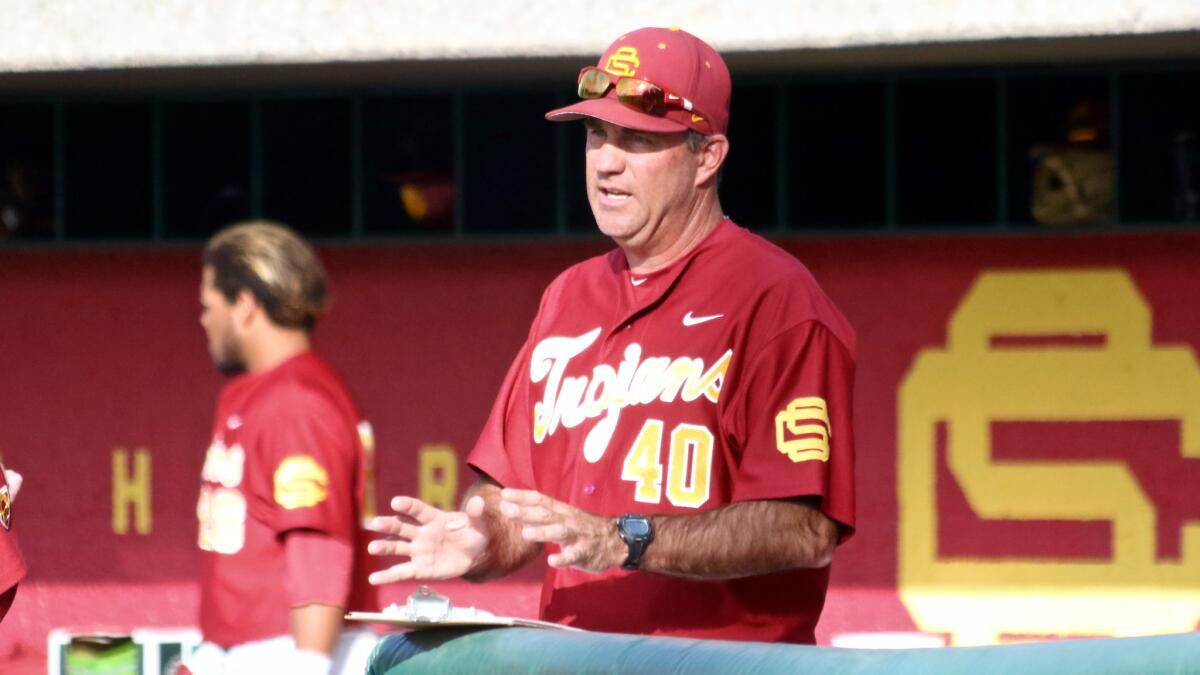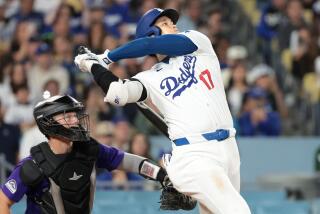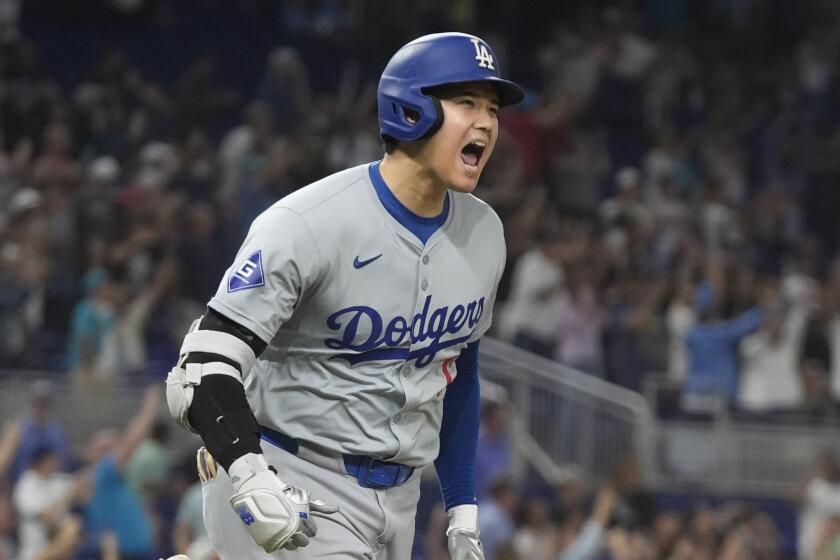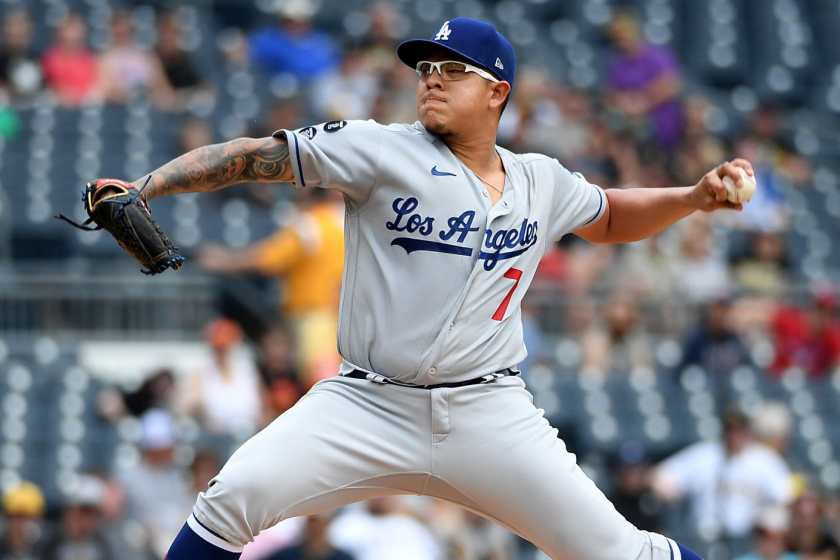For college teams, one MLB draft decision can make or break a season

Two days before the Major League baseball draft began, USC Coach Dan Hubbs sat in his office, crossed his arms and tapped his foot like a teenager uneasily agitating a gas pedal.
The stress and uncertainty was upon him. Hubbs guessed he would have trouble sleeping the next couple of nights. His mind would churn. He’d agonize over spreadsheets like an accountant during tax season.
“People always ask right now, ‘How are you going to look next year?’ ” Hubbs said. “No idea. Ask me in a month.”
This is a precarious time for top-level college baseball coaches. The draft, which began Thursday, can decimate a recruiting class.
Unlike in football or basketball, MLB clubs can draft players out of high school. Therefore, college baseball recruiting requires a balance: Recruit too many elite prospects and the draft might destroy you; but back off and your program might lack firepower.
Baseball programs can award only 11.7 scholarships for a roster of about 35, so coaches must get their math right. A coach who promises a scholarship that isn’t available could be forced to rescind an offer and alienate a player.
“You’re constantly trying to figure out: How much risk are you willing to take?” Hubbs said.
The risk has burned USC before. Former coach Chad Kreuter pulled in a highly rated class that would have been freshmen in 2008. Then the 2007 draft claimed his top six recruits, including Chatsworth’s Mike Moustakas, who went second overall.
“That really sets you back a couple years,” Hubbs said. The Trojans didn’t play in the postseason again until 2015.
UCLA benefitted from a choice that went the other way. In 2008, Gerrit Cole, a right-hander from Orange Lutheran High, turned down millions from the New York Yankees to become a Bruin. During his sophomore season, he led UCLA to its best season in history. He was later selected No. 1 overall by the Pittsburgh Pirates in 2011 and earned an $8-million bonus, the largest in history.
“Cole,” UCLA Coach John Savage said, “is the poster child” for what can happen to a college program if a top player puts off professional ball.
In the past 10 years, 32 draft picks have stuck with UCLA, according to the school. Players such as Cole have fostered the greatest era in school history.
But more recently, UCLA has lost more prospects than it has retained. This year, UCLA missed the 64-team NCAA regional field.
Savage said the tug-of-war with MLB is more difficult than ever. New draft rules and more sophisticated scouting departments mean professional teams almost always sign their top picks.
For example, the Bruins had little hope of retaining Mickey Moniak, an outfielder from La Costa Canyon High who was chosen No. 1 overall by Philadelphia on Thursday. He committed to UCLA as a high school freshman.
Last year, out of 315 players drafted in the first 10 rounds, all but six signed. Sixty-five players received a bonus of $1 million or more.
This year, draftees have until July 15 to make a decision. That means for the next month or so, college coaches might end up recruiting their top prospects all over again. And hoping their projections about who will sign and who won’t are accurate.
“You don’t want to over-recruit,” Long Beach State Coach Troy Buckley said. “You don’t ever want to get in a situation where your numbers exceed your [scholarship] limits, and then you’ve got to start making decisions on people that really haven’t done anything wrong.”
Buckley counts on at least one extra scholarship becoming available. Savage aims for an 80% success rate on recruits.
“We don’t want 50%. That’s the dagger,” he said. “Those are really tough to recover from.”
Trust with the player is vital.
“If they’re telling us they’re going to sign for $500,000, and they get $500,000, you really have no issue,” Savage said. “The ones that really hurt are when a guy says he’ll sign for $500,000, and they sign for $200,000.”
Fruitful years require creativity too. Multiple coaches interviewed for this story referred to the scholarship limit as a “salary cap.”
Hubbs said he might ask a player who can afford it to accept a backloaded scholarship. Hubbs pledges a more generous package later to free up space now.
Other times, he said, he’ll offer a contingent scholarship. He’ll tell a recruit: If a top player leaves for the draft, the scholarship is yours.
Like a big league general manager, college coaches forecast years in advance. Many players now commit to colleges as high school underclassmen; some are still in middle school.
“That’s when you’ve got to be careful, when you’re working that far out,” Buckley said. “And yet, you’ve got to do some of it or else you’re going to be left holding the bag.”
So the coaches huddle with their spreadsheets, one for each permutation. Hubbs described it as a compulsion.
He watches the selections on television. When one of his recruits is picked, Hubbs texts a quick congratulations. Later, he calls to check in.
Then, he waits.
zach.helfand@latimes.com
Twitter: @zhelfand
More to Read
Go beyond the scoreboard
Get the latest on L.A.'s teams in the daily Sports Report newsletter.
You may occasionally receive promotional content from the Los Angeles Times.










